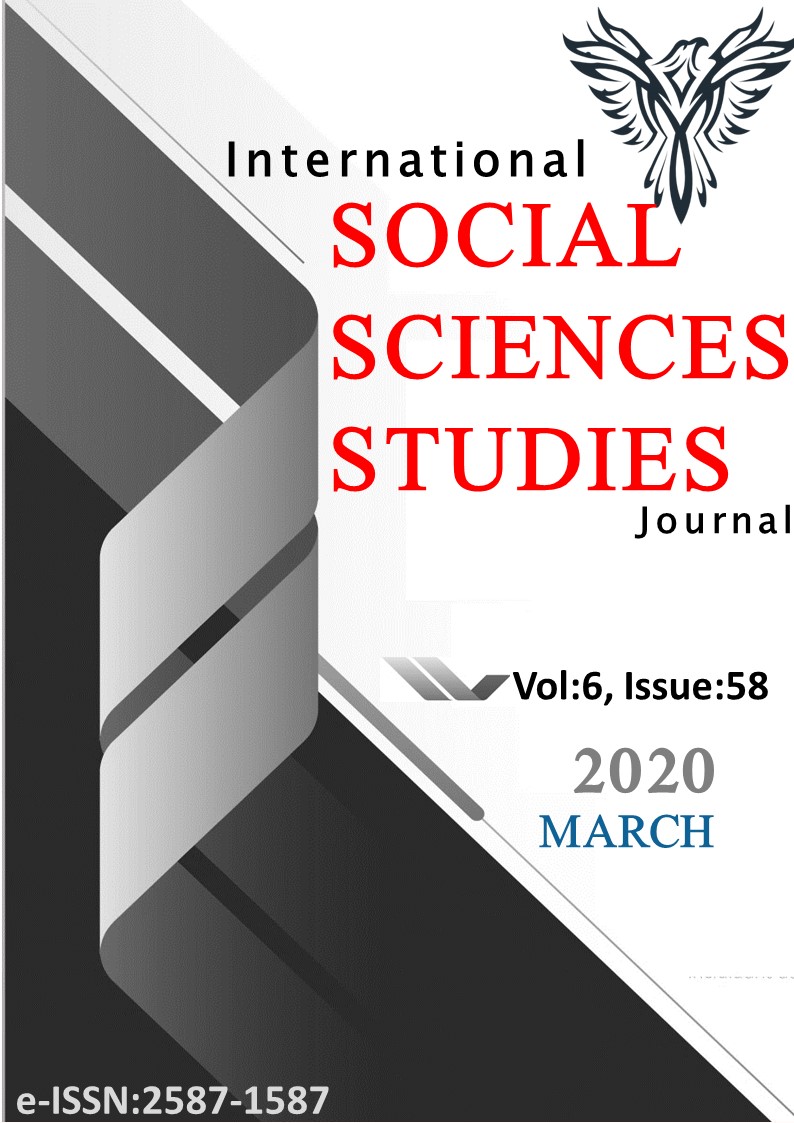Author :
Abstract
Sanayileşmekte olan toplumlarda ekonomik süreçler ile birlikte kırsaldan şehirlere doğru göçler de artmıştır. Göç, yerleşme amacı ile yapılan yer değiştirmesi olup genelde kırsaldan kente şeklindedir. Kentler, bu süreçte ekonomik, sosyal, kültürel, siyasi, teknik v.b. unsurları bünyesinde barındıran değişim merkezleridir. Türk aile yapısı da köyden kente doğru göçerken bu değişim sürecinden nasibini almıştır. Bu sürecin en önemli yapı taşını ise kadın oluşturmaktadır. Eskinin geleneksel geniş aile tipi günümüzde artık yerini çekirdek aileye bırakmıştır. Kadın da ailenin reisi olan baba ile çocukları arasında bir köprü olarak hem eşini hem de çocuklarını idare etmek gibi zor bir görevi de üstlenmiştir. Geleneksel toplumlarda, erkeğin temel görevi sadece haneye gelir getirmek iken kadın, hem ailenin ekonomisini düzenlemek, gelir gider tablosunu denkleştirmek hem de evin ve çocukların bakımından sorumlu olmaktadır. Köyden kente göçen bu kadınlar, bir yandan kendileri için yepyeni bir dünya olan kente uyum sağlamaya çalışırlarken bir yandan da göç sonrası ekonomik sıkıntıları aşmak içinde çaba harcamaktadırlar. Sanayileşmenin ortaya çıkardığı göç olgusu yanında yaşanan bu maddi sıkıntılar da kadının görevlerini zorlaştırmaktadır. Bunun yanı sıra kadının alışkın olduğu köy kültürü ile içinde yaşadığı kent kültürü arasında çelişkiler de kadını zora sokmaktadır. Berna Türemen’in eserlerinde köylü kadının güzellik anlayışı ile kentli kadının estetik kaygıları tek bir kadın vücudunda ortaya konmuştur. Tarih boyunca da kadın anadır, doğurgandır anlayışı toplumlar tarafından benimsenmiştir. Bu tarihsel anlayış Berna Türemen’in eserlerinde iri yapılı kadınların bedenlerinde onların gücünün vurgulanmasını hedeflemiştir. Ayrıca kadın doğurganlık ve yaratıcılık özelliği ile kendi kişisel evreninde bir dünya olarak resmedilmiştir. Her kadın ister köylü ister kentli olsun biriciktir.
Keywords
Abstract
In industrializing societies, migration from rural to urban areas has increased along with economic processes. Migration is a displacement made for the purpose of settlement and is generally rural to urban. In this process, cities are centers of change that include economic, social, cultural, political and technical elements. While the Turkish family structure migrated from the village to the city, took its share from this process of change. The most important building block of this process is women. Nowadays, the traditional extended family type is now replaced by the nuclear family. The woman also undertakes the difficult task of managing both her husband and children as a bridge between the father, the head of the family, and the children. In traditional societies, while the main task of the man is only to bring income to the household, the woman is responsible for regulating the economy of the family, balancing the income and expenditure table and maintaining the house and children. These women, who migrate from villages to cities, not only strive to adapt to the city, which is a brand new world for themselves, but also strive to overcome post-migration economic problems. In addition to the phenomenon of migration created by industrialization, these financial problems make the tasks of women difficult. In addition to this, the contradictions between the village culture that the woman is accustomed to and the urban culture in which she lives are making her life difficult. In the works of Berna Türemen, the beauty of the peasant woman and the aesthetic concerns of the urban woman have been revealed in a single female body. Throughout history, the understanding of women’s being mother and fertile has been adopted by societies. This historical understanding, in Berna Türemen's works, aims to emphasize their power in the bodies of large-scale women. In addition, women are portrayed as a world in their own personal universe with fertility and creativity. Every woman, whether peasant or urban, is unique.





